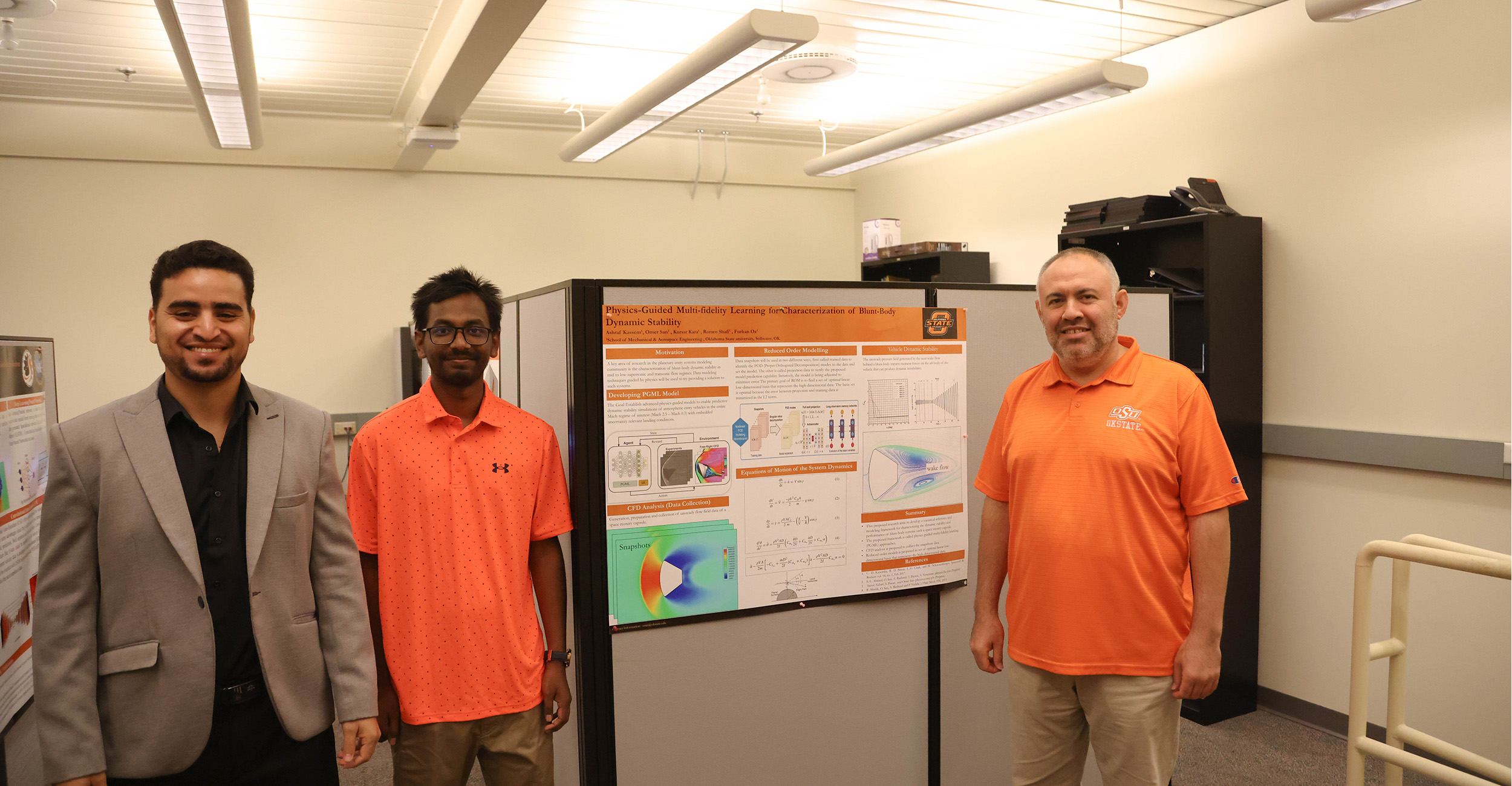
MAE doctoral candidates complete internship at NASA’s Ames Research Center
Tuesday, August 20, 2024
Media Contact: Tanner Holubar | Communications Specialist | 405-744-2065 | tanner.holubar@okstate.edu
Two Ph.D. students from Kara Lab in the Oklahoma State University School of Mechanical and Aerospace Engineering recently completed internships at NASA’s Ames Research Center in Mountain View, California.
Shafi Al Salman Romeo and Ashraf Kassem finished a nine-week internship on Aug. 11, working on the dynamic stability of atmospheric entry vehicles as part of NASA’s Early Stage Innovation (ESI) program.
“The visit provided a great chance to get to know the team members better, both professionally and personally, which strengthened our collaboration,” Kassem said. “Overall, the visit was a highly productive and enriching experience.”
The dynamic stability of atmospheric entry vehicles is crucial area of study for space missions. The students researched characterizing parameters for the dynamic stability of a spacecraft during reentry of a planetary surface, when the vehicle can experience rapid oscillating movement. They addressed these challenges using scientific machine learning and artificial intelligence tools.
“During the vehicle's deceleration from space to a planet, it experiences high oscillation amplitudes and instabilities, especially at low Mach numbers,” Kassem said. “These instabilities can jeopardize the effective deployment of the parachute and the entire mission. Thus, characterizing dynamic stability parameters for better control is highly desirable. Previous efforts have relied on traditional techniques and algorithms from the 1970s, but these often lack generalization.”
Dr. Kursat Kara, MAE assistant professor, has led the NASA ESI project since it was awarded to his lab in 2023. He has mentored Romeo and Kassem during their time researching in the Kara Aerodynamics Research Laboratory (Kara Lab) at OSU.
Kara said Romeo has focused on reconstructing flight trajectories from sparse observational points of ballistic range testing data, crucial for evaluating the performance of blunt bodies, such as the Genesis entry capsule.
“Initial efforts require an empirical fit to the dataset,” Romeo said. “Traditional methods consider either ballistic range testing data or emerging Free-flight CFD (FF-CFD) simulation data. However, the methods focusing on existing ballistic range data will lack precious information from the FF-CFD simulations.
“Hence, a data fusion approach can merge the information from a realistic ballistic range with the high-fidelity FF-CFD that can be used with a parameter estimation framework to identify the dynamic and static stability coefficients with accompanying uncertainties.”
Kassem concentrated on dynamic stability of atmospheric entry vehicles during descent. These vehicles can encounter myriad complex behaviors and stability issues. Being able to accurately estimate dynamic stability coefficients is crucial for successful entry, descent and landing missions.
His research uses a six-degrees-of-freedom nonlinear parameter estimation model (6-DOF-NPE) to calculate the coefficients and discover any uncertainties in predictions.
“The study employs a Bayesian Markov Chain Monte Carlo (MCMC) inference technique to determine the posterior distribution of the parameters,” Kara said. “The initial guess for the MCMC algorithm is obtained using the nonlinear least squares approach. The 6-DOF axis system and equations of motion are utilized to develop the physical model, which is then validated against two 6-DOF flight simulation check cases.”
Both students said the opportunity to research at Ames Research Center was a special experience, as it was both humbling and inspiring to interact with the highly respectful and intelligent NASA personnel.
“We had the unique opportunity to interact with highly respectful and intelligent NASA personnel, which was both inspiring and humbling,” Kassem said. “We were initially expecting a strictly technical environment, but we were pleasantly surprised by the amount of fun and camaraderie that was woven into the daily routine."
